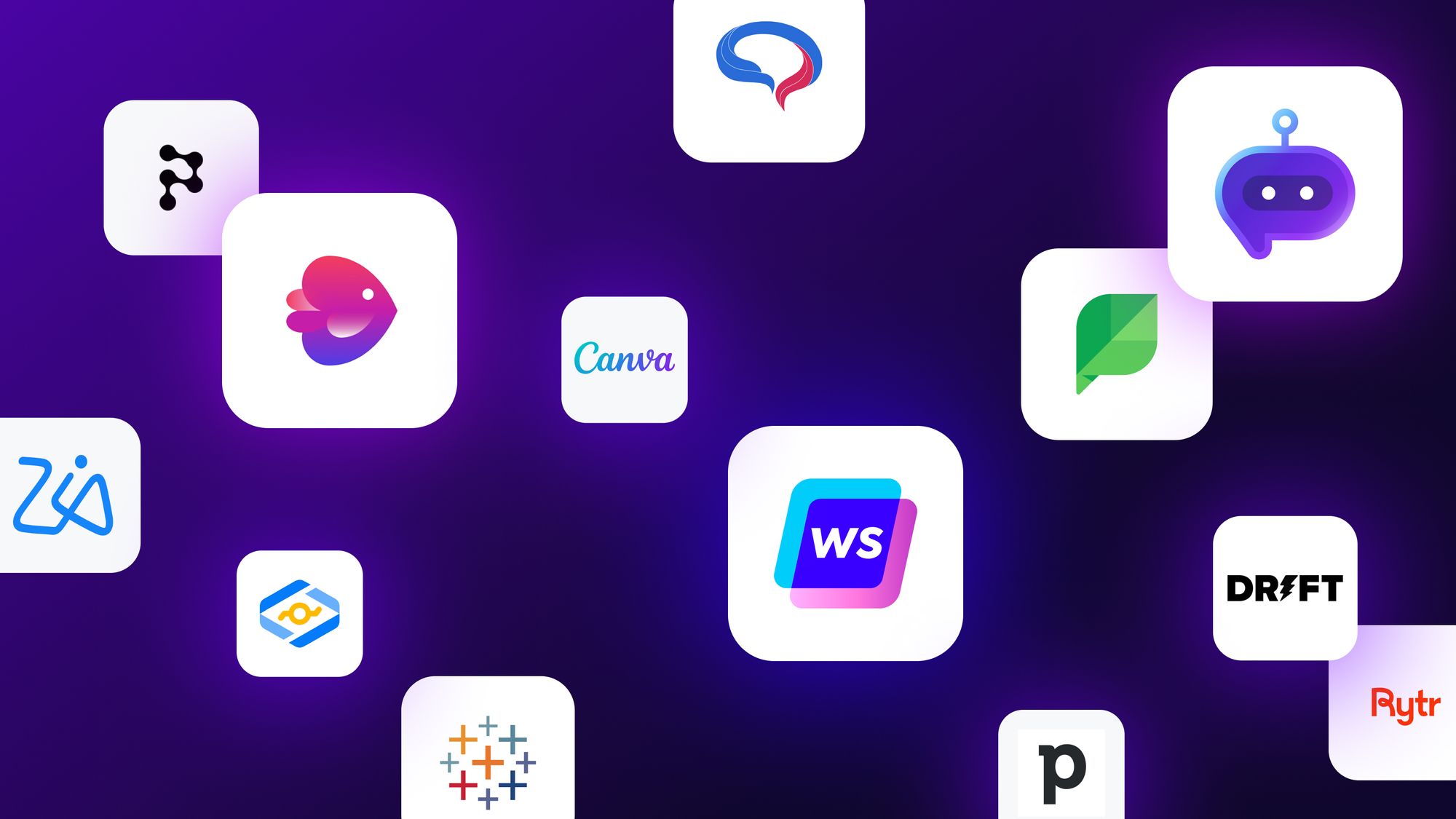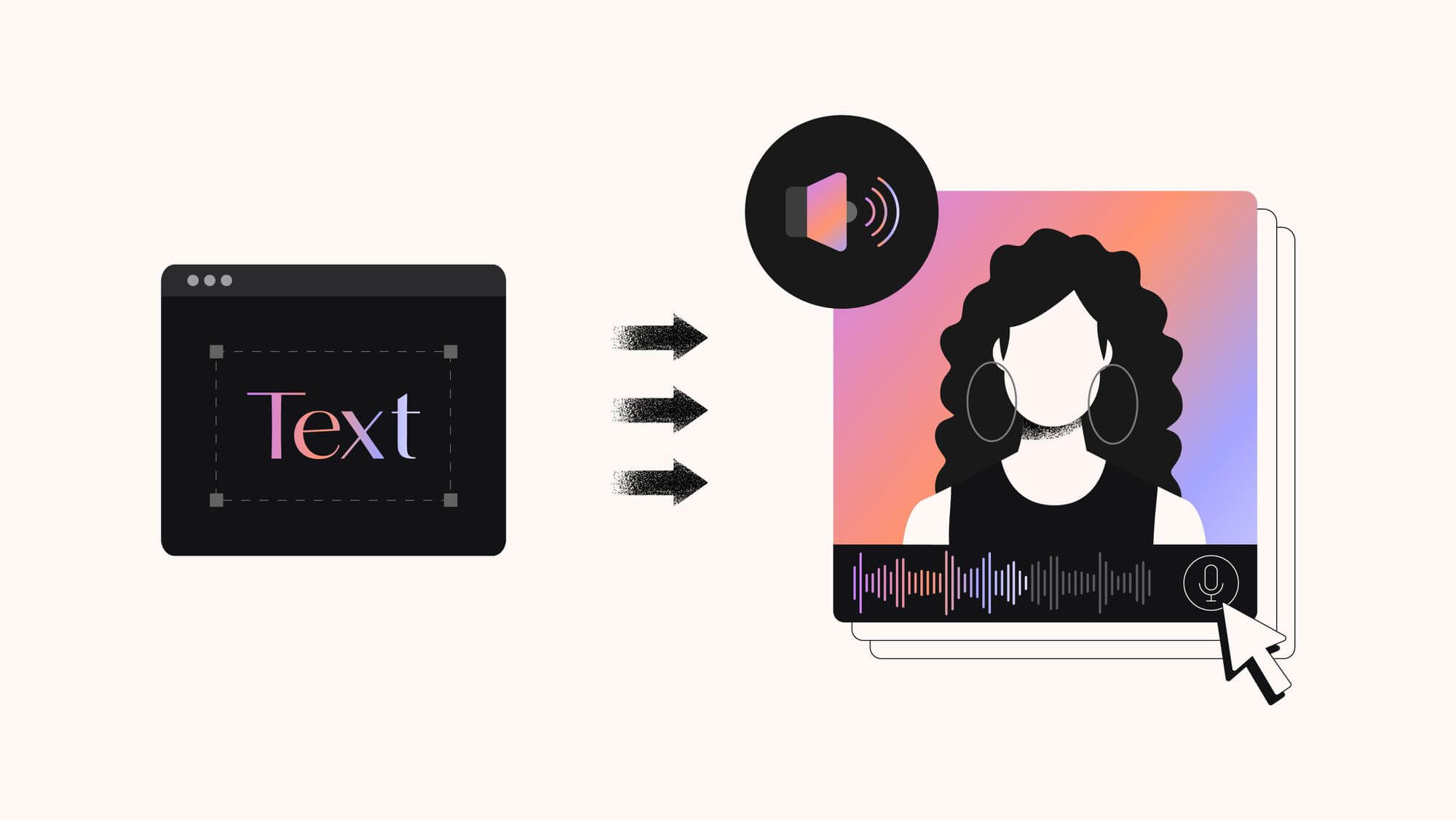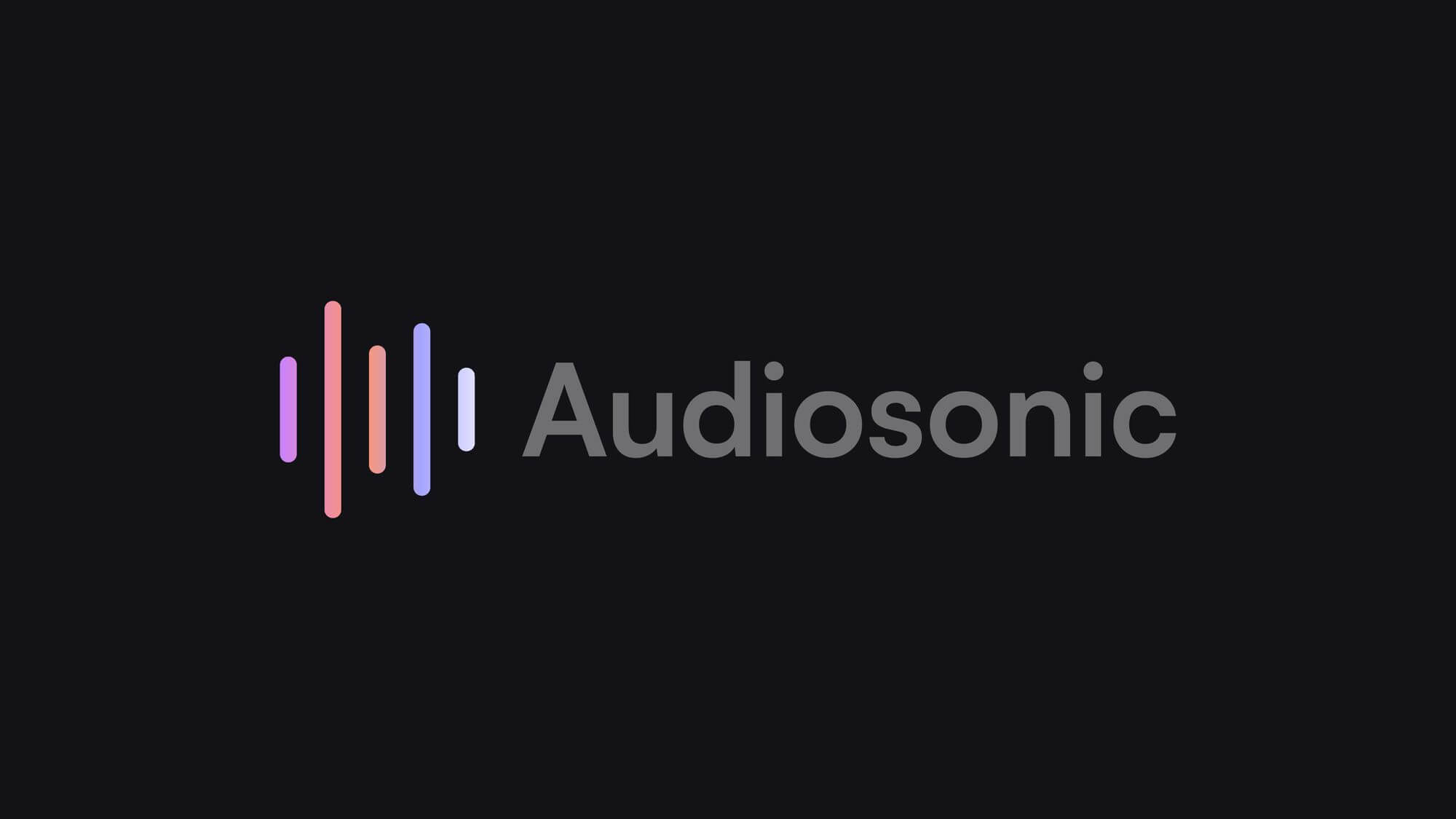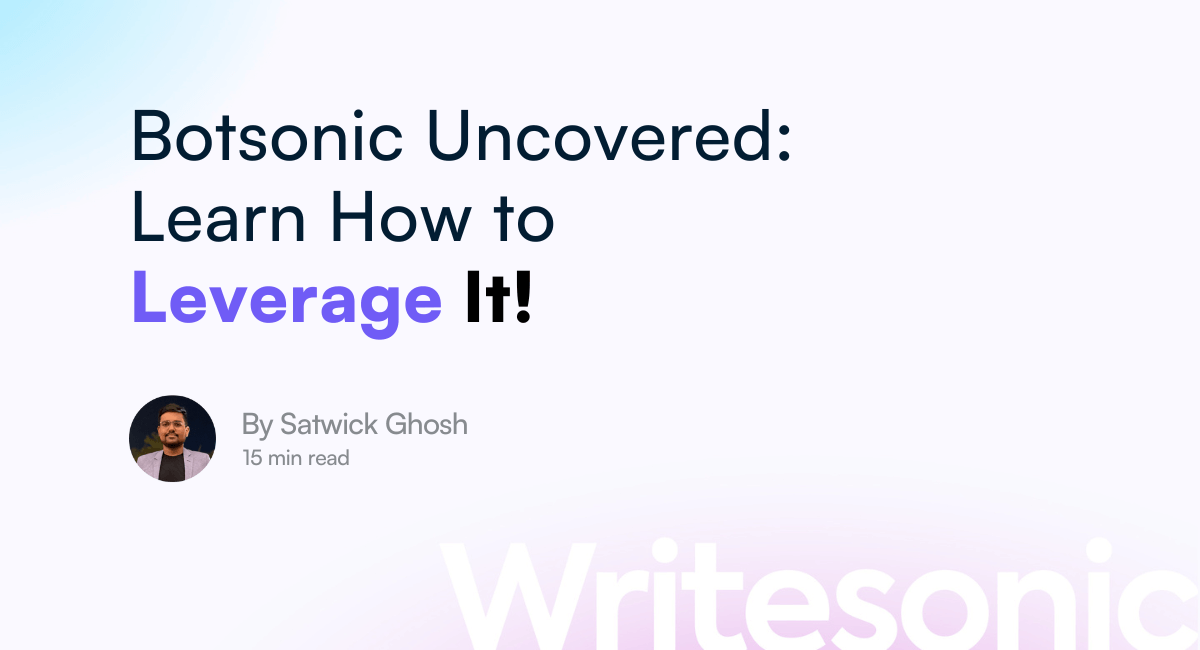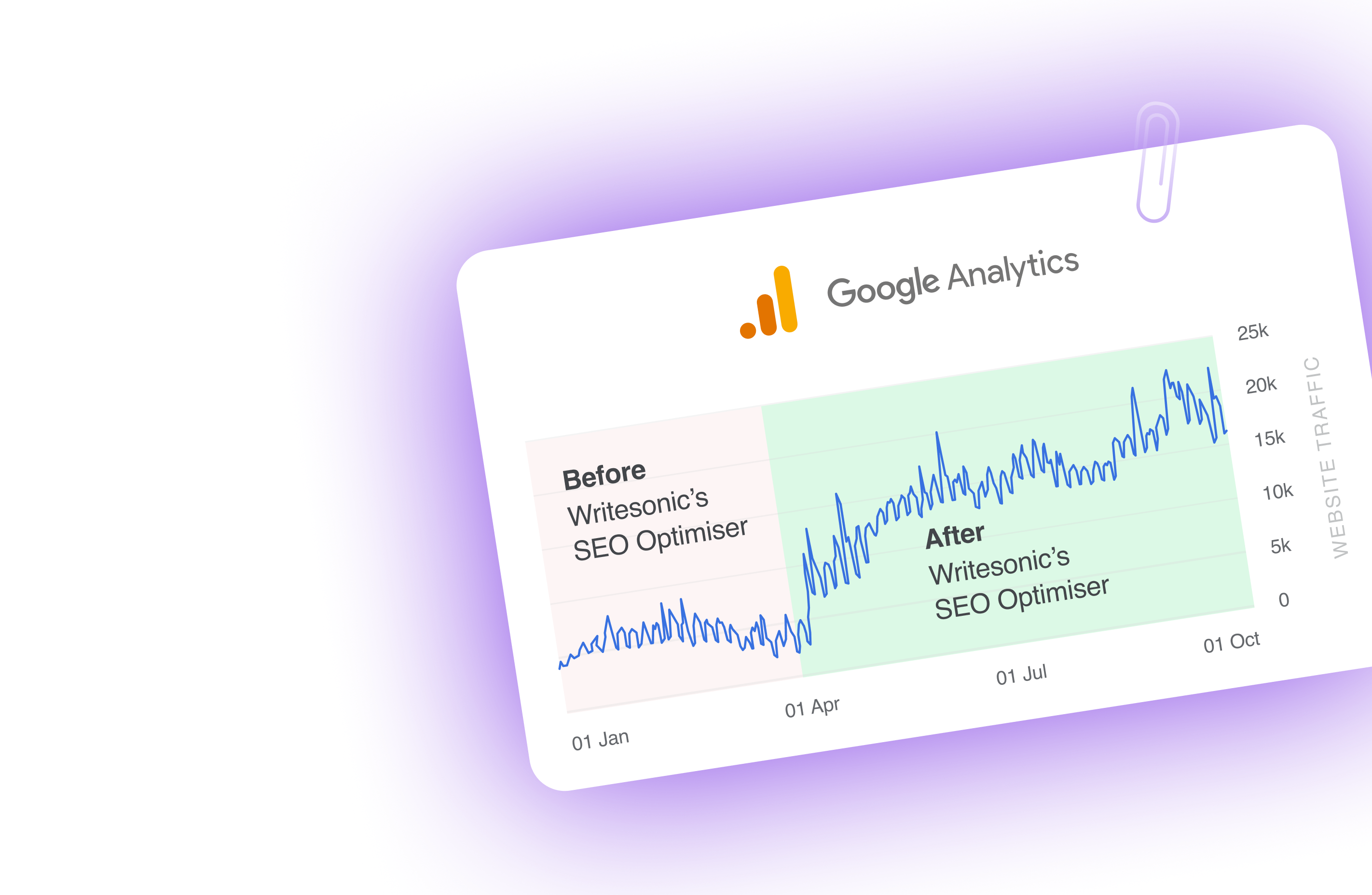Research analyzing 487 search results shows that human-generated content dominates 83% of top rankings. This raises the question–does Google penalize AI content?
Google claims it doesn’t automatically penalize AI-written content, but the March 2024 core algorithm update suggests otherwise.
The latest update targets low-quality AI content specifically as Google aims to cut non-original content in search results by 40%.
But here’s the truth–Google won’t automatically penalize content just because it’s AI-generated.
Your content’s quality, value, and accuracy matter most, whatever way you create it.
So, if you want to stay a step ahead of Google’s algorithm and ensure your AI-generated content receives just as much as human-written work, keep reading.
What is AI-generated content?
AI-generated content is text, images, or videos created by artificial intelligence systems instead of humans. These systems, powered by technologies like machine learning and natural language processing (NLP), are designed to mimic human writing, tone, and structure.
For example, AI can draft a blog post, generate product descriptions, or create a social media caption in seconds.
By analyzing vast datasets of human language, these tools learn patterns, context, and styles to produce content that often feels surprisingly natural.
This means that AI content writing tools, like Writesonic, don’t just generate bland text—they can actually produce engaging and SEO-friendly content.
But can writers completely rely on AI-generated content to speed up their workflow?
Unlike human-written content, AI-produced text follows patterns and lacks the personal nuances that people bring.
Here are some common types of AI-generated content you’ll come across:
- Marketing materials and blog posts
- Social media captions and updates
- Product descriptions for e-commerce
- Email campaigns and newsletters
- Customer support responses
Keep in mind that the quality of AI-generated content heavily depends on two crucial factors:
- The quality of your instructions (prompts).
- The dataset the AI is trained on.
This means the better your guidance and learning materials, the stronger and more accurate your AI-generated output will be.
Understanding Google’s approach to AI-generated content
Google doesn’t penalize content simply for being AI-generated. Instead, its focus is on the content’s quality, originality, and relevance, regardless of its origin.
Even Google has quoted, “Helpful content that provides value to users will always be rewarded, whether it’s created by humans, AI, or a combination of both.”
Keeping this in mind, Google still assesses some factors to determine the quality of AI-generated content. Here are a few things the leading search engine has stated about its approach to AI content:
1. Evolving policies and core updates
Google’s stance on AI-generated content has evolved. In earlier years, AI content was scrutinized heavily for its potential to flood search results with low-quality material.
However, recent updates, including the March and August 2024 Google core updates, emphasize that content quality—not its creation method—determines rankings.
Key criteria include:
- Does the content provide value? Content must satisfy user needs by offering actionable insights, clear answers, or unique perspectives.
- Is it original? AI or not, regurgitated or plagiarized material faces penalties.
- Is it aligned with E-E-A-T standards? Experience, Expertise, Authoritativeness, and Trustworthiness are critical measures of quality.
These core updates also introduced stricter spam policies to combat low-effort, automated content—something AI tools can generate when used without human oversight.
This is particularly important for AI users: if AI-generated content lacks originality or appears to exist solely for ranking manipulation, Google’s algorithms are likely to downgrade it.
So if you’re using AI tools or ChatGPT for content creation, you should focus on crafting unique, insightful pieces that go beyond superficial information.
💡Learn more about: How to write the perfect ChatGPT prompt for content creation
2. User experience
Your content’s success isn’t just about what you say. It’s also about how you present it.
Google’s quality raters examine hundreds of signals that reflect user experience. Here are some factors that affect user experience in Google’s eyes:
- Time spent by visitors on your page: When someone stays longer on your content, it signals to Google that they found what they were looking for. But if they bounce back to search results quickly, it might indicate your content didn’t meet their needs.
- Page structure and accessibility: Google rewards pages that load quickly and are easy to navigate. Their Core Web Vitals measure key aspects of user experience, including load time, interactivity, and visual stability.
What’s particularly interesting is that Google combines these technical metrics with human evaluation. They employ real people to rate search results, helping their algorithms understand what makes content truly valuable.
These raters look at everything from grammar and spelling to the overall polish of your content.
3. E-E-A-T (Experience, expertise, authoritativeness, trustworthiness)
Google’s E-E-A-T framework guides content quality standards, particularly for sensitive or specialized topics.
Experience, Expertise, Authoritativeness, and Trustworthiness (E-E-A-T) form the backbone of Google’s content evaluation process.
This update reinforced Google’s mission to reward content demonstrating depth, authenticity, and credibility—especially in YMYL (Your Money, Your Life) sectors like finance and healthcare.
Google’s quality raters use this framework to assess whether your content deserves to rank well.
You might be wondering what makes content trustworthy in Google’s eyes. Here’s what their quality raters look for:
- First-hand experience with the topic
- Clear expertise and credentials
- Strong reputation and authority
- Accurate, well-researched information
- Proper citations and sources
Remember, trust is at the center of E-E-A-T. As Google puts it, untrustworthy pages have low E-E-A-T no matter how Experienced, Expert, or Authoritative they may seem.
In various forums, John Mueller, Google’s Search Advocate, has emphasized that Google doesn’t automatically detect and penalize AI-generated content. However, content that lacks credibility appears spammy or fails to add user value and may be demoted.
In short, this means writers need to focus on quality and authenticity—AI-generated or not.
4. The role of BERT and MUM in AI content evaluation
Google’s advanced algorithms, BERT (Bidirectional Encoder Representations from Transformers) and MUM (Multitask Unified Model) play a significant role in assessing the quality of AI-generated content.
- BERT is designed better to understand the context and nuances of human language. It allows Google to analyze search queries and content with a deeper understanding of meaning, intent, and relationships between words.
For AI-generated content, BERT ensures that only material addressing search intent and providing meaningful insights ranks highly.
- MUM takes this further by understanding and generating content across multiple languages and formats (text, images, videos).
It evaluates how well content meets complex search queries, such as “What’s the best way to prepare for a marathon in cold weather?” AI-generated content must demonstrate depth, relevance, and authority to meet MUM’s stringent quality standards.
These technologies ensure that AI content isn’t judged by its origin but by its ability to deliver accurate, helpful, and contextually rich information.
💡 Related to your reading: How to Avoid AI Detection in Writing
Factors that trigger penalties for AI content
While AI tools can be incredibly helpful, they can also get your website into trouble if not used properly.
In fact, recent studies have shown some concerning trends regarding AI content and SEO.
Websites relying solely on AI content lost an average of 17% of their traffic and dropped eight positions in search rankings.
However, specific factors can lead to penalties or lower rankings if the content doesn’t align with Google’s quality guidelines. Here’s what to watch out for:
1. Low-quality or spammy content
Content created solely to manipulate rankings or increase web traffic without adding real value is highly likely to be penalized.
Google’s SpamBrain system has become more adept at identifying low-effort, spammy content, including mass-generated AI content with little relevance or uniqueness.
SpamBrain’s advanced detection methods have helped Google reduce spam content in search results by over 40% since its introduction.
2. Lack of originality and depth
Google highly values originality.
This means that repeating generic or widely available information without adding new insights can harm content rankings, as search algorithms prioritize unique, helpful content.
And when multiple websites use similar AI tools, they end up creating nearly identical content
This homogenization can lead to several issues:
- Content that’s too similar to existing web pages.
- Articles lacking unique insights or perspectives.
- Information that doesn’t add new value to the topic.
On the other hand, a 2023 survey by BrightEdge reported that 85% of marketers saw increased rankings for content that offers original insights or perspectives.
3. Inadequate E-E-A-T (Experience, expertise, authoritativeness, and trustworthiness)
Google’s E-E-A-T guidelines are foundational for content quality. This means content with weak authority or expertise is at higher risk for demotion.
So, if you’re relying on AI-generated content, you must supplement it with credible sources, expert quotes, or data from trustworthy studies to enhance its perceived authority and trustworthiness.
For example, AI-generated financial advice without credible citations or human review may trigger ranking penalties.
As a result, you need to conduct in-depth and thorough research to maintain credibility and quality in your content and avoid being penalized by Google.
4. High keyword density
Overloading AI content with keywords in an attempt to rank higher can lead to penalties.
Google’s algorithms are trained to detect unnatural keyword stuffing, which disrupts readability and user experience.
AI content should aim for natural keyword integration rather than repetitive keyword use.
💡 Learn more about: How to conduct keyword research
5. Poor user engagement metrics
To assess content quality, Google considers user engagement signals, such as bounce rate and dwell time.
If AI-generated content fails to capture user interest, resulting in high bounce rates, it can be flagged as low-value.
A study shows that pages with high bounce rates (above 70%) often rank lower because Google assumes that users aren’t finding the content useful or engaging.
Tools like Writesonic can help generate content that grabs attention, but human editing and refinement are essential for keeping readers engaged.
6. Absence of visual or interactive elements
AI-generated content lacking visual elements like images, charts, or videos may also reduce engagement and ranking.
Visual aids are essential for boosting SEO rankings, as they can improve readability, comprehension, and user retention.
According to HubSpot’s 2023 Content Marketing Report, articles with relevant images get 94% more views than text-only articles.
This means AI content should ideally be enhanced with visual elements that support the text and boost reader interest.
7. Overuse of AI without human oversight
You’ll be surprised to learn that sites combining AI content with human oversight dropped three positions and lost just 6% of their traffic.
This stark difference highlights why proper human supervision matters.
The biggest red flags come from companies that rely on AI content with zero oversight.
When you simply copy and paste AI-generated content without reviewing it, you’re likely to face two major issues:
- Accuracy problems: AI tools can sometimes produce inaccurate or outdated information.
- Quality concerns: Without human editing, the content might not align with Google’s E-E-A-T standards.
Remember, AI content often lacks the personal touch that makes writing engaging and valuable.
Without proper oversight, you might miss opportunities to add real-world examples, relevant metaphors, or valuable insights your readers seek.
💡Learn more: How Do AI Content Detectors Work and How To Bypass Them
How to ensure AI content avoids penalties
Creating AI content can be efficient, but there’s a fine line between leveraging AI tools and sacrificing content quality.
Here are some key practices to ensure your AI-generated content meets Google’s standards and avoids potential penalties:
1. Enrich AI content with human insights
AI tools can produce a good starting draft, but they lack the personal touch and expertise that human writers bring.
To meet Google’s E-E-A-T standards, supplement AI-generated text with unique insights, real-life examples, or professional perspectives.
For instance, if you’re creating an article on financial advice, consider including input from a certified financial planner or referencing credible sources like the U.S. Federal Reserve.
Adding these details improves credibility and differentiates the content, ensuring it offers real value to readers.
2. Fact-check and cite reputable sources
Google rewards content backed by credible, authoritative sources.
AI tools may not always ensure accuracy, so it’s essential to fact-check and support claims with reliable data or expert quotes.
Your validation process should include these essential steps:
- Compare facts and statistics with trusted sources.
- Double-check the AI’s claims and statements.
- Ensure your information is current and accurate.
- Validate critical data points from multiple sources.
For example, if you’re writing about healthcare trends, reference trusted organizations like the World Health Organization or recent studies published in peer-reviewed journals.
Or, if your AI content mentions multiple statistics, cross-check them to ensure that they are accurate and valid.
3. Avoid keyword stuffing and focus on natural language
While it may be tempting to overload content with keywords, Google’s algorithms detect and penalize unnatural keyword stuffing.
Instead, focus on using keywords naturally within the content flow so Google doesn’t flag and demote your SERP rankings.
According to Ahrefs, you should aim for a keyword density of 2-5% as a best practice.
To go more into detail, this means you should divide the number of keywords in your blog by the total number of words, then multiply that number by 100.
So, if you use your target keyword 10 times in a 1000-word blog post, you’ll have a keyword density of 1%.
💡 Read more about: 13 best free keyword research tools
4. Keep user engagement in mind
If you want to prevent readers from leaving your page, structuring your content in an easy-to-read and skimmable manner is the way to go.
Here are some effective strategies to improve your content’s user engagement so it doesn’t get flagged by Google:
- Use clear, concise headings: Organize sections with straightforward headings that reflect the content’s main points. Avoid vague or overly complex titles, making it easier for readers to find the information they need.
💡Pro tip: From an SEO perspective, try to incorporate keywords in your headings.
- Break up large paragraphs: Long paragraphs can overwhelm readers. Aim for short paragraphs (2-3 sentences each) to keep the text digestible.
- Incorporate bullet points and lists: Use bullet points or numbered lists for key points, steps, or tips. This not only breaks up text but also highlights essential information for skimming.
- Include visuals and infographics: Visuals such as images, infographics, and charts can make complex information easier to grasp. Research shows that articles with visuals get 94% more views than those without.
- Add whitespace: Don’t cram content onto the page. Adding whitespace around text, images, and other elements improves readability and reduces visual strain.
- Highlight key information: Use bold text or italics to emphasize important points or keywords. But keep it subtle—too much bolding can become distracting.
- Incorporate CTAs naturally: Place calls-to-action (CTAs) within the content flow without disrupting readability. Readers should feel encouraged to take the next step without interrupting their reading experience.
- Use a consistent structure: For long posts, maintain a predictable structure so readers know what to expect. For example, start with an introduction, use subheadings for each section, and end with a clear conclusion.
5. Prioritize originality and depth
AI-generated content should aim to provide fresh perspectives rather than simply summarizing what’s already available online.
Google’s algorithms favor content that adds new insights or approaches a topic from a unique angle.
AI tools should improve your content without taking over its essence.
You can use plagiarism checkers and AI detectors to spot sections of your content that match too closely with existing web pages.
💡P.S: Check out Writesonic’s free AI content detector that can analyze up to 1000 words without any sign-up!
If you want your content to stand out, you can incorporate more valuable insights into your content by:
- Enriching the content with real-world examples, case studies, and personal insights.
- Citing quotations or facts from subject matter experts to build credibility.
💡Pro tip: The best way to work with AI outputs involves splitting the content into smaller chunks.
You can edit each section individually to create a natural flow in your writing, which will make it harder for AI content checkers to detect.
6. Review, edit, and refine the AI-generated draft
AI-generated content isn’t ready to publish right out of the tool. AI tools often generate generic or superficial content that fails to meet user needs.
Instead, always make sure you are thoroughly editing and refining the draft so the content meets Google’s quality standards.
This includes checking for factual accuracy, enhancing readability, and aligning the tone to resonate with your audience.
💡 Also read: 10 best AI writing software in 2024
Bottom line: Does Google really penalize AI content?
So, does Google penalize AI content?
The answer isn’t black and white.
Google doesn’t penalize content just because it’s AI-generated. Instead, it cares about one thing above all: is the content helpful or just plain spammy?
Google’s priority is quality content that is unique, informative, and genuinely valuable.
According to Google’s Search Central Blog, they’re focused on “helpful” content, regardless of whether a human or AI created it.
Here’s what it comes down to:
- Quality matters more than the source: Google looks at engagement, originality, and E-E-A-T standards (Experience, Expertise, Authoritativeness, and Trustworthiness). If AI content meets these standards, it’s good to go.
- Low-quality content is at risk: AI content only gets penalized if it’s low-quality—if it lacks depth, is repetitive, or doesn’t offer anything new. Content that’s keyword-stuffed or inaccurate can be demoted, no matter who created it.
- A human touch still helps: To keep AI content in Google’s good graces, a bit of human oversight goes a long way. Fact-checking, editing, and adding a unique perspective make all the difference.
Here’s the bottom line: As long as your primary goal is delivering value through relevant, helpful content, you won’t face penalties for your AI-generated content.
Google’s sophisticated algorithms, including BERT and MUM, are designed to evaluate content quality and user value. They look at factors like semantic connections, engagement metrics, and how well your content satisfies user intent.
Tools like Writesonic’s Article Writer are a great way to create high-quality drafts quickly.
But the finishing touches, like refining and adding expertise, are what make AI content truly valuable for both Google and readers.
The real question isn’t whether Google will penalize your AI content.
It’s whether your content, AI-generated or not, provides genuine value to your audience.
So focus on creating high-quality, relevant content that meets search intent, and you’ll be aligned with Google’s goals.
Try Writesonic for the most human-like AI-generated content
Want AI content that reads like it’s written by a person?
Writesonic makes that happen with tools designed to keep your content fresh, engaging, and SEO-friendly.
Here’s what sets it apart from other AI content creation tools:
- Real-time, competitive insights: Writesonic’s AI Article Writer 6.0 doesn’t just generate text—it uses live data to produce factually accurate, up-to-the-minute content. It even includes competitor research and internal linking suggestions, making your content informative and strategic.
- Seamless readability: With Writesonic’s Free AI Text Humanizer tool, AI content doesn’t sound robotic. It’s tailored to feel natural and conversational, helping you connect better with your readers and keep them engaged.
- Plus, the humanized version within the article writer completely surpasses AI detection and provides a much more natural and engaging tonality to blog content.
- Authenticity you can trust: Writesonic’s free AI Content Detector tool allows you to check if content feels genuinely human-written by grading it with an AI detention score.
- Customizable tone and style: Writesonic adapts to your brand voice, helping you create content that’s not only accurate but truly yours. It’s perfect for brands that want consistency and a professional touch in their messaging. Just upload samples of your existing content or content guideline files, and let the AI create a writing style tailored to your needs.
Ready to see what Writesonic can do for your content strategy?
Try it out today and create content that’s smart, human-like, and built to rank.
FAQs
1. Does Google penalize AI-generated content?
Google does not penalize content solely for being AI-generated.
Instead, Google focusses on the quality and usefulness of the content.
If AI-generated content is helpful, original, and provides value to users, it is treated similarly to human-written content.
However, content that is spammy, lacks originality, or is intended to manipulate search rankings may be penalized, regardless of its origin.
2. How can I ensure my AI-generated content meets Google’s quality standards?
To align AI-generated content with Google’s quality standards:
- Ensure originality: Avoid duplicating existing content.
- Provide value: Offer unique insights or information that benefits readers.
- Maintain readability: Use clear language and proper formatting.
- Cite reputable sources: Back up claims with credible references.
- Avoid manipulative practices: Steer clear of keyword stuffing or deceptive tactics.
Incorporating human review and editing can enhance the quality and authenticity of AI-generated content.
3. What are Google’s E-E-A-T guidelines, and how do they apply to AI content?
E-E-A-T stands for Experience, Expertise, Authoritativeness, and Trustworthiness. These guidelines help Google assess the quality of content.
For AI-generated content, it’s essential to:
- Demonstrate experience: Showcase firsthand knowledge or practical experience on the topic.
- Exhibit expertise: Provide accurate and well-researched information.
- Establish authoritativeness: Cite reputable sources and include expert opinions.
- Build trustworthiness: Ensure transparency and honesty in the content.
Meeting these criteria can improve the credibility and ranking of AI-generated content.
4. Can AI-generated content rank well on Google?
Yes, AI-generated content can rank well on Google if it meets quality standards.
The content should be original, valuable, and adhere to E-E-A-T guidelines.
Regular updates and human oversight can further enhance its performance in search rankings.
5. Are there tools to detect AI-generated content?
Yes, several tools can detect AI-generated content. For instance, Writesonic offers a free AI Content Detector that helps verify the authenticity of text through an AI detection grade, ensuring it aligns with quality standards.

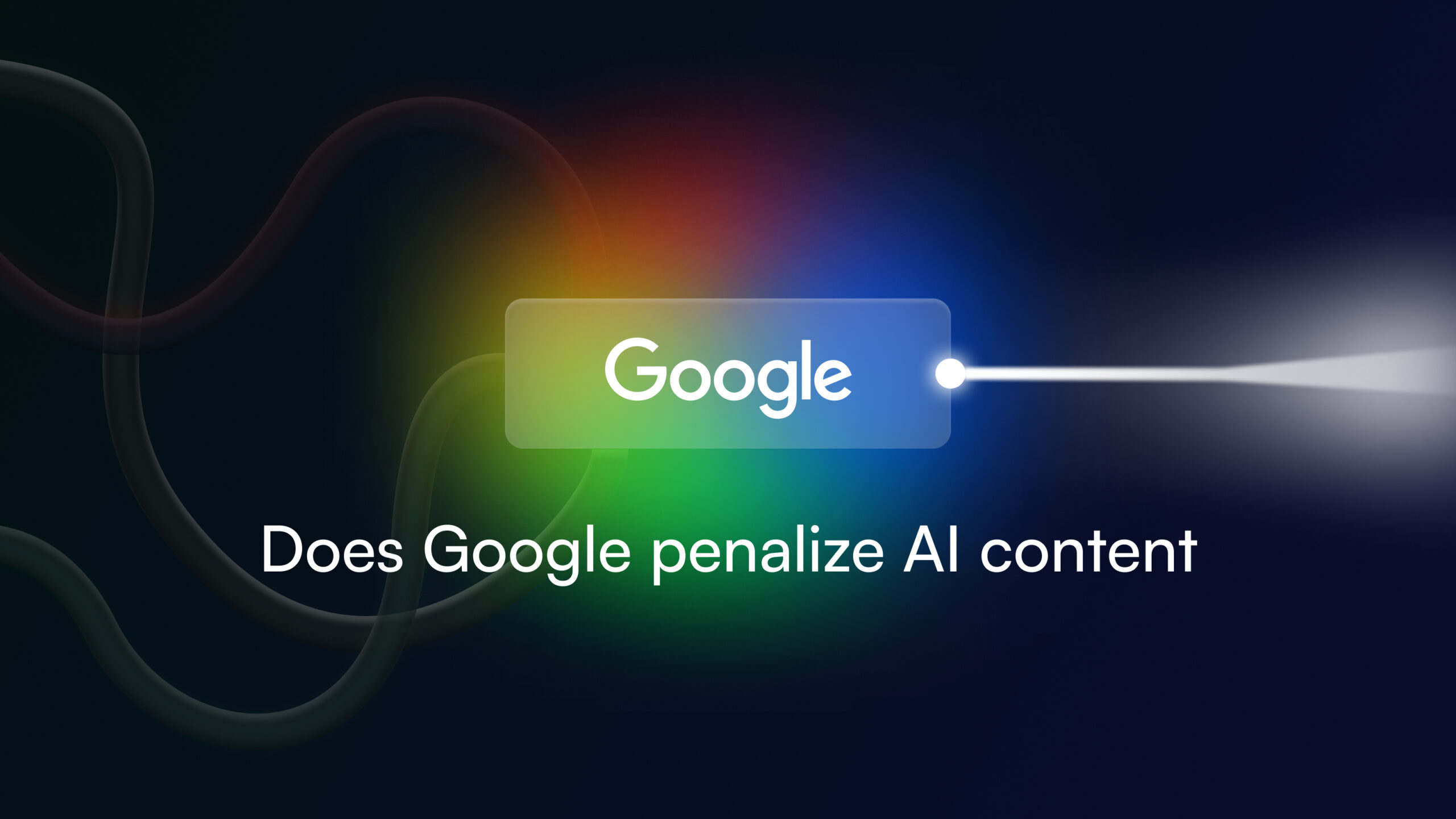

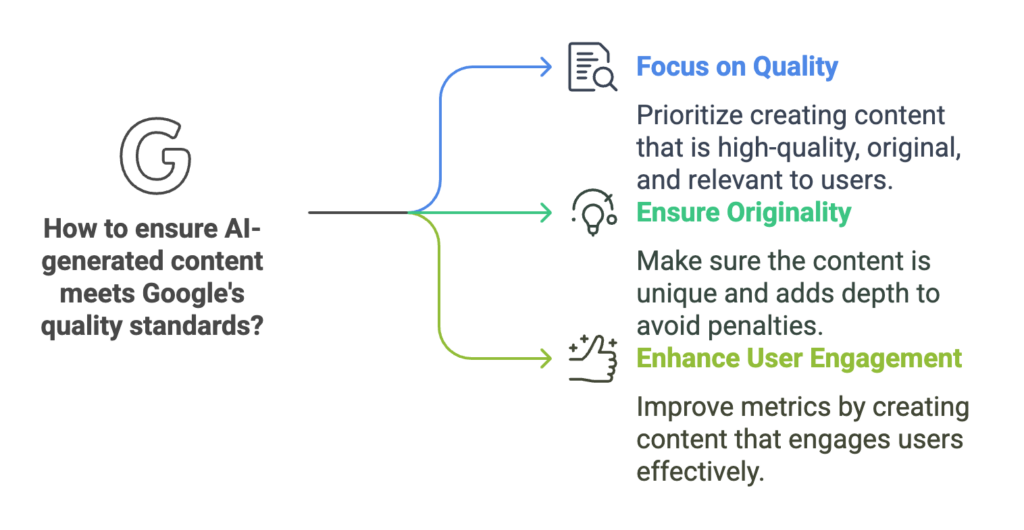
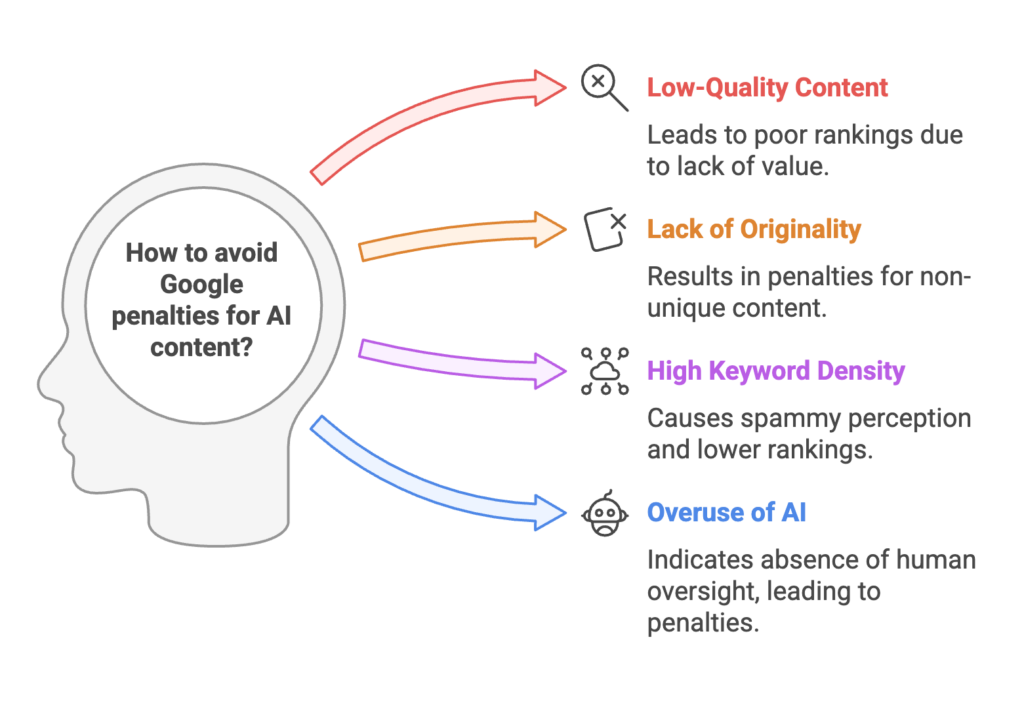
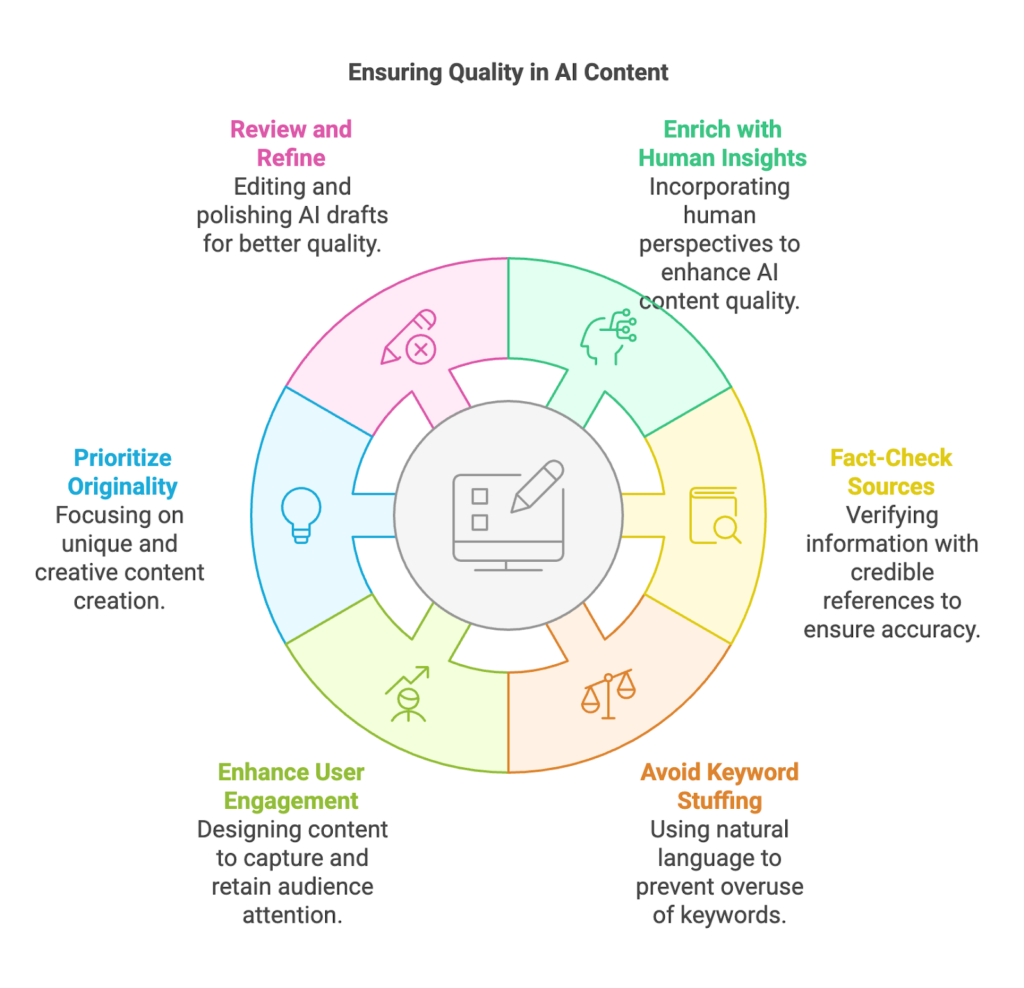
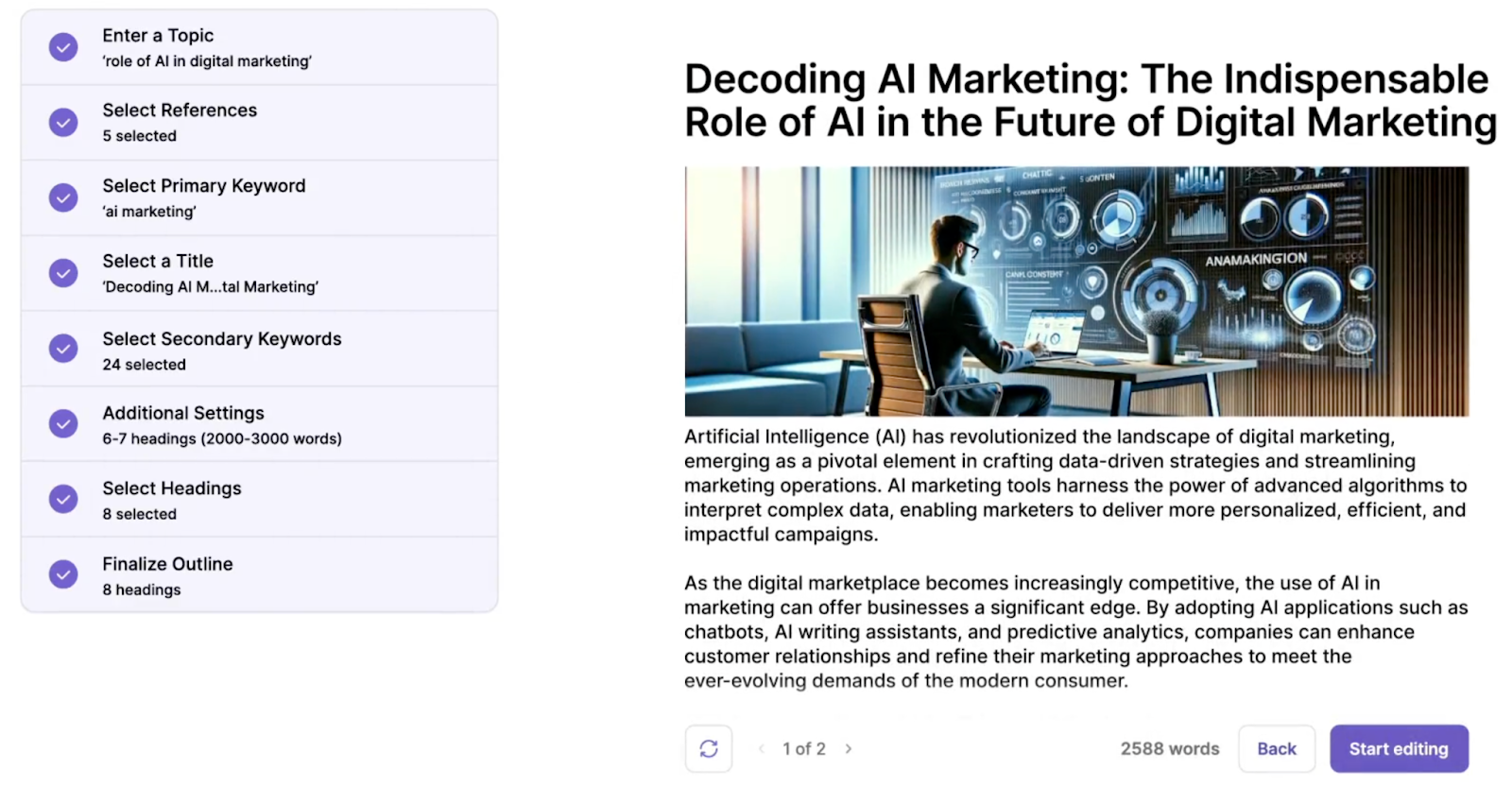



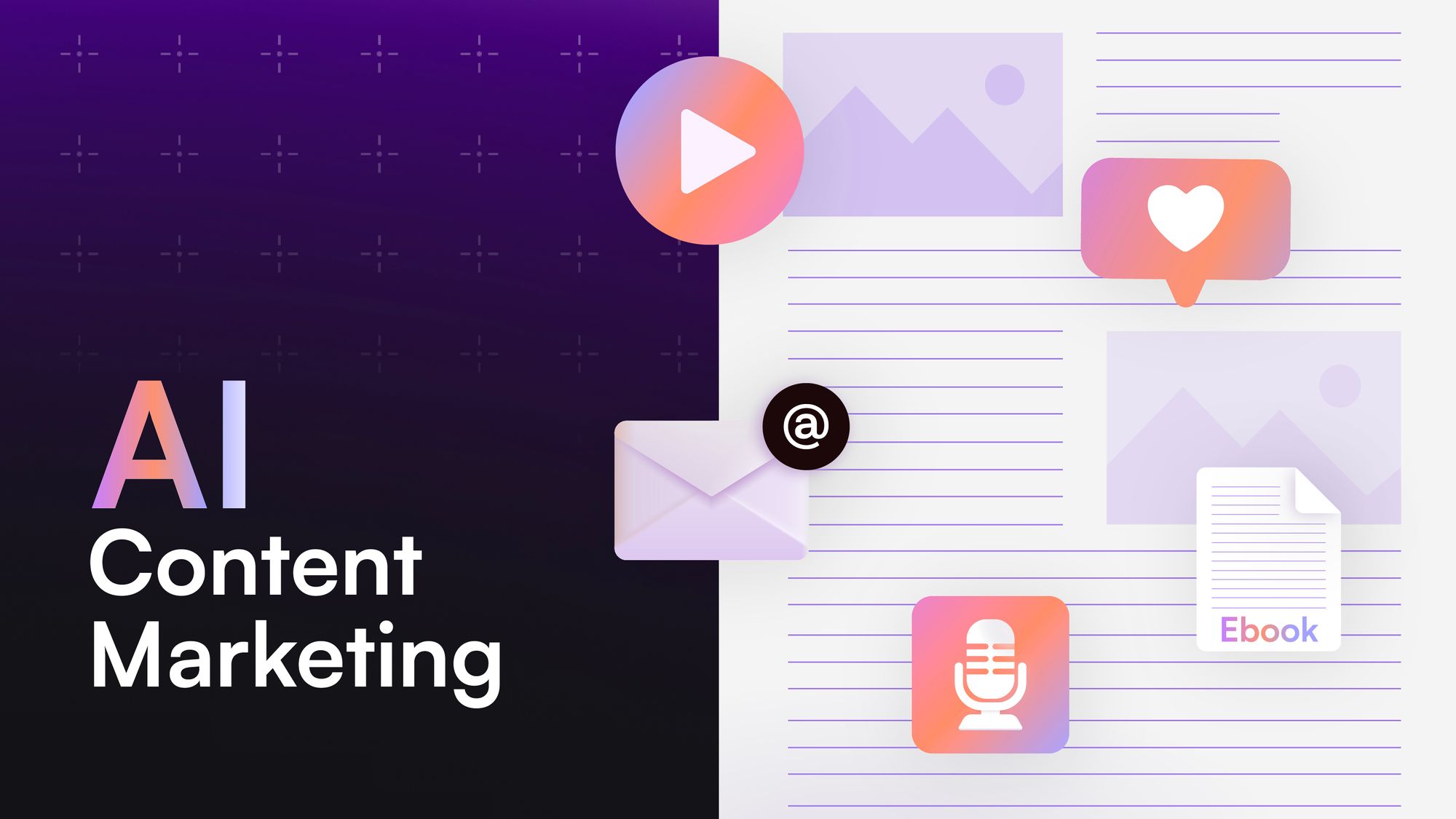



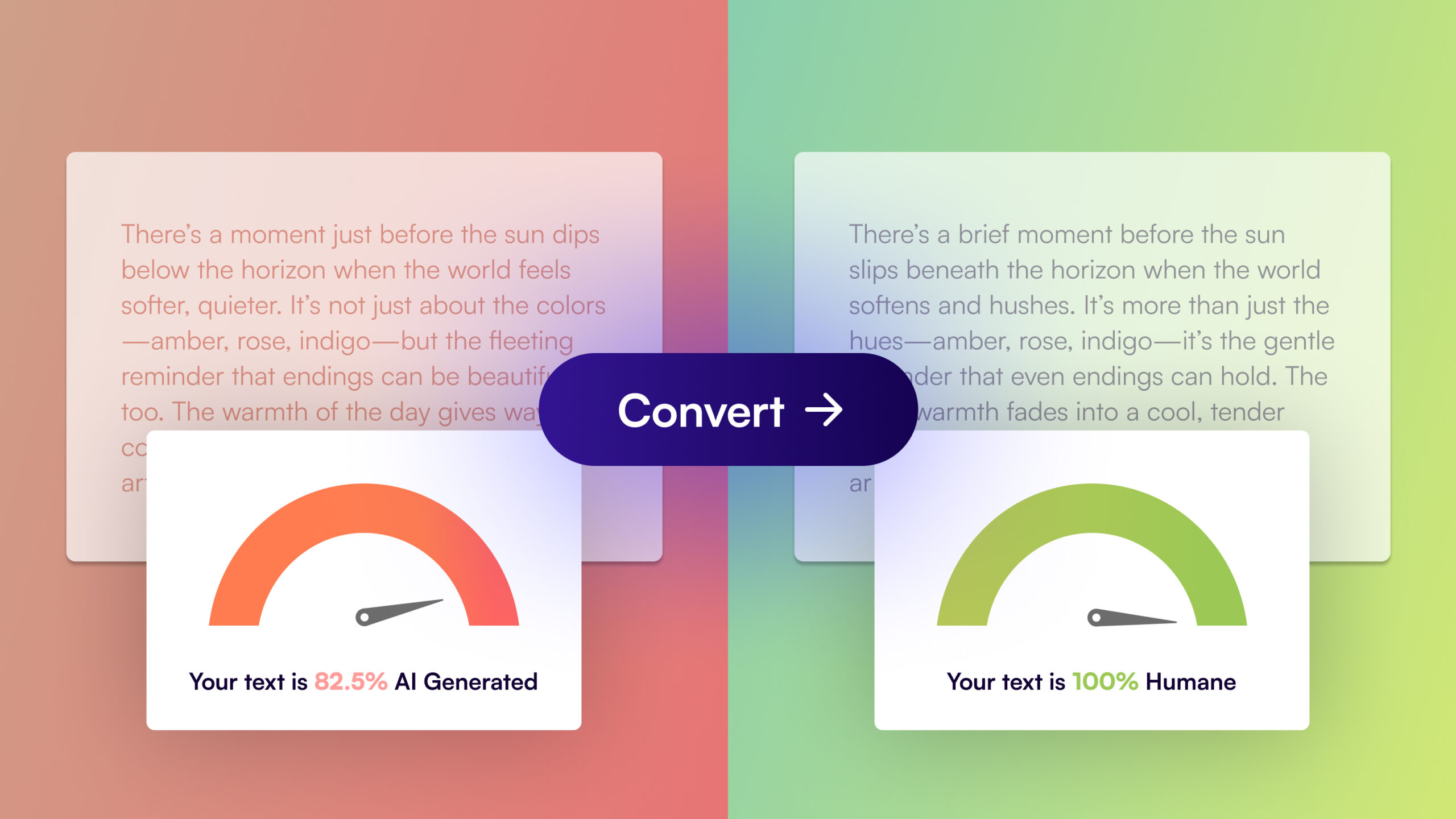
![21 Practical Ways to Use AI [Examples + Tools]](/wp-content/uploads/How-to-use-AI-scaled.jpg)

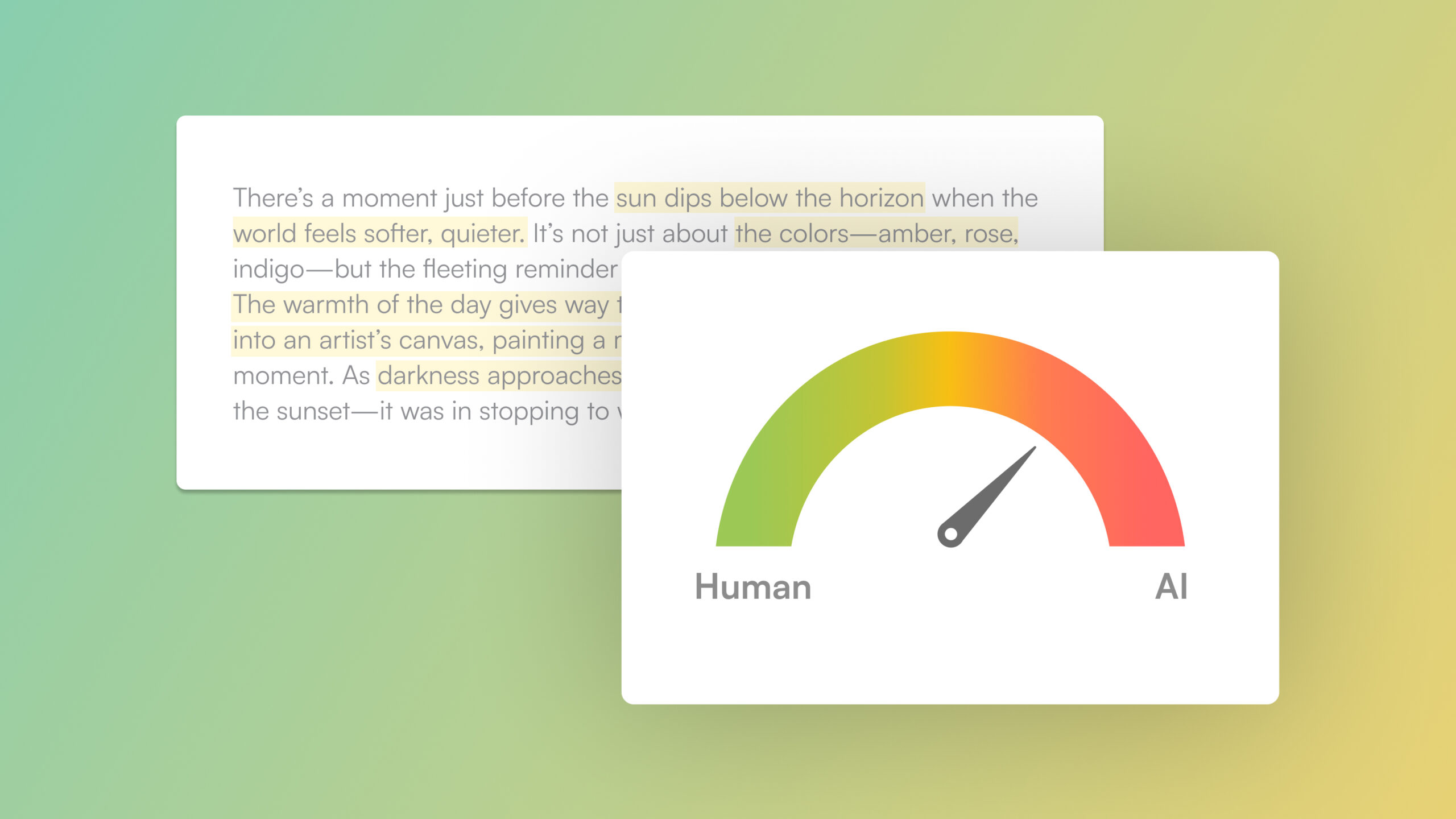
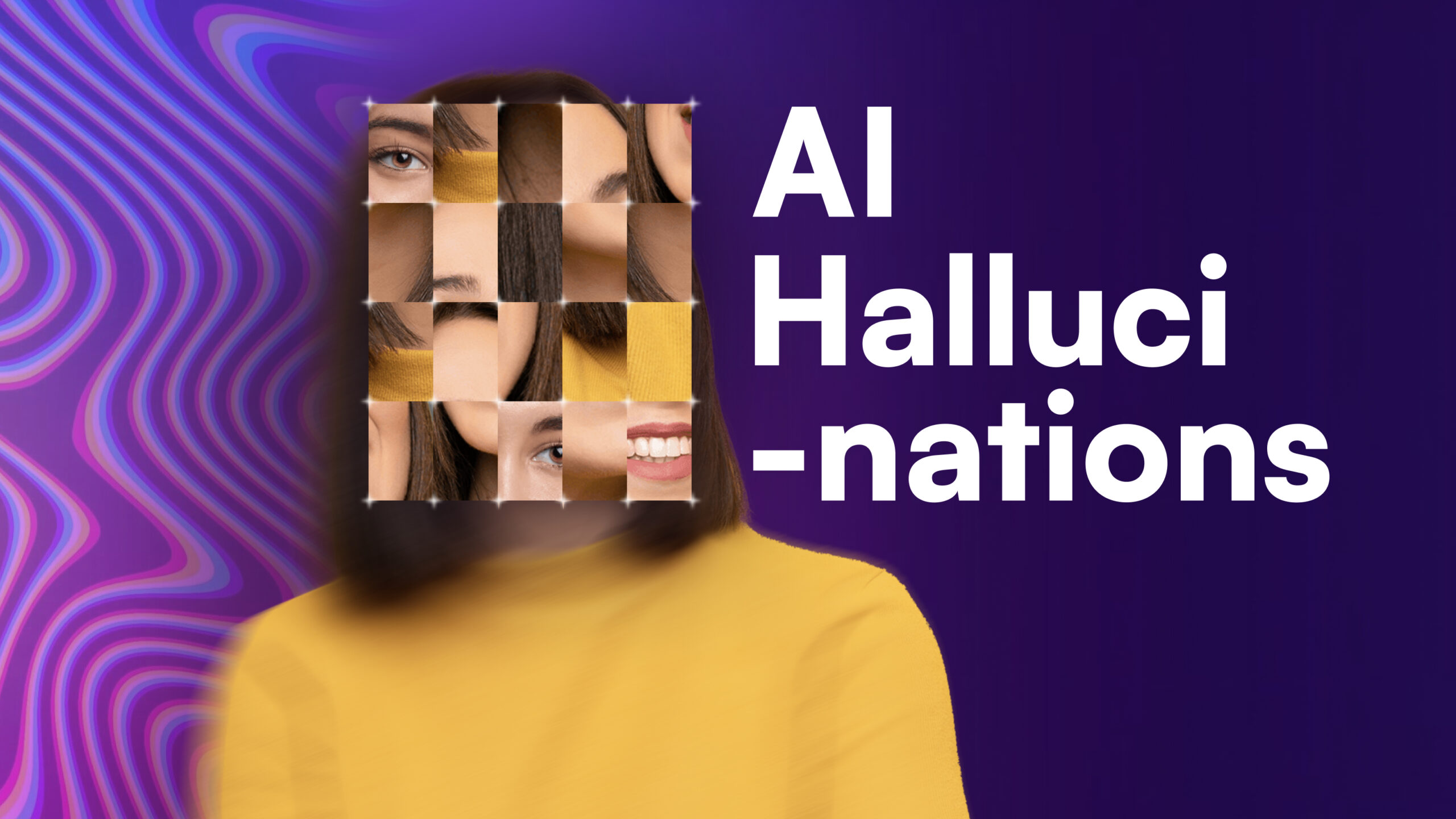
![140 Best AI Tools: Rated & Reviewed [2025]](/wp-content/uploads/Best-AI-Marketing-Tools-1-1.jpg)

